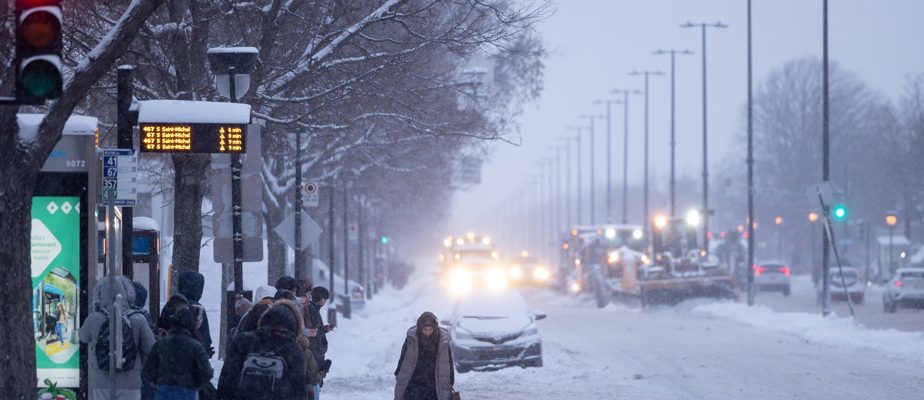Access to bus stops, metro stations and train stations in the Montreal region is still often difficult, especially for more vulnerable users, reveals a new study by the National Institute of Scientific Research (INRS ). Its authors call on the authorities to better choose locations to facilitate the “last or first kilometer” journey.
“There are a lot of places that are neither safe nor friendly for getting on, getting off the bus or even waiting for a bus. It’s the same with the metro or the train. Even getting home is not easy. Often, there are no safe crossings to go to a residential neighborhood, for example,” says professor and author of the study Marie-Soleil Cloutier.
In the last year, the student Philippe Brodeur-Ouimet and Mme Cloutier and their team set out to map 20,000 bus stops in the greater Montreal region, but also the 68 metro stations and their 275 exits, as well as around sixty train station accesses and exits.
At the same time, walks were also organized to observe the situation on the ground in around fifteen more sensitive stations, in the company of vulnerable users, including the elderly, parents with children or disabled people.
The objective was to determine whether these stations are “walkable”, in other words whether the risks of getting there are high, moderate or low. A series of factors were taken into account to achieve this, such as the density of the road, the accident-prone nature of the sector, the canopy, the pedestrian and cycling facilities found there or even the size of the population.
The organization Trajectoire Québec, whose mandate is to defend the interests of public transport users, also collaborated in the study. According to its general director, Sarah V. Doyon, “the principle was above all to study perceived safety before and after public transport, in the last kilometer, because we have very little data on this”. “This is something that has been ignored by research so far,” she laments.
Poorly adapted facilities
Ultimately, the observation made by Mme Cloutier and his team are tough. “Not only are the majority of stations not suitable, but what is even more worrying is that often, the neighborhoods where it is the least safe and friendly are the places where there are a lot of people who take public transport,” notes the specialist in road safety issues.
Conversely, the places considered the safest “are often suburban towns, with a smaller user base,” she reasons.
It is as if the question of users’ feeling of security had never really been taken into account. That needs to change.
Marie-Soleil Cloutier, author of the study from the National Institute of Scientific Research
“We are not talking about rebuilding the entire city, but about better choosing stop locations to take into account people’s safety, and not just the fluidity and speed of travel. The pedestrian reflex must be there. »

MAP TAKEN FROM THE INRS STUDY
Map reflecting the pedestrian potential of the Montreal region
Sarah V. Doyon hopes to see the situation change soon, which would in turn help revive public transport use. “If you want to take the metro or the bus, feeling safe to get there is decisive. There are people who still tell us today that they prevent themselves from going out in winter, from going to certain stops. And it’s such a shame,” she breathes.
“Everything is not dark, there are very good arrangements in place. But there are also many bus stops where we simply installed a pole and a sign. In peri-urban areas, we notice it a lot,” adds the DG.
Better anchor for a change
Beyond the developments, Trajectoire Québec calls above all for better communication between transport companies and municipal authorities.
An awareness tour among transport companies and political decision-makers is planned after the publication of the study, starting this Wednesday. “We want to make known this need for actors to talk to each other, to better align themselves to find solutions and reverse this trend,” concludes M.me Doyon.
Reached by telephone, the director of Piétons Québec, Sandrine Cabana-Degani, also hopes that this study will contribute to changing mentalities in this area, especially among political and organizational decision-makers.
“If it can ensure that we think about this aspect when we plan public transportation projects and collaborate with the boroughs, that would already be a great deal. I think we really want to come up with projects that are planned in an integrated way to meet the needs of citizens across all travel areas. We have to aim for it,” concludes Mme Cabana-Degani.
